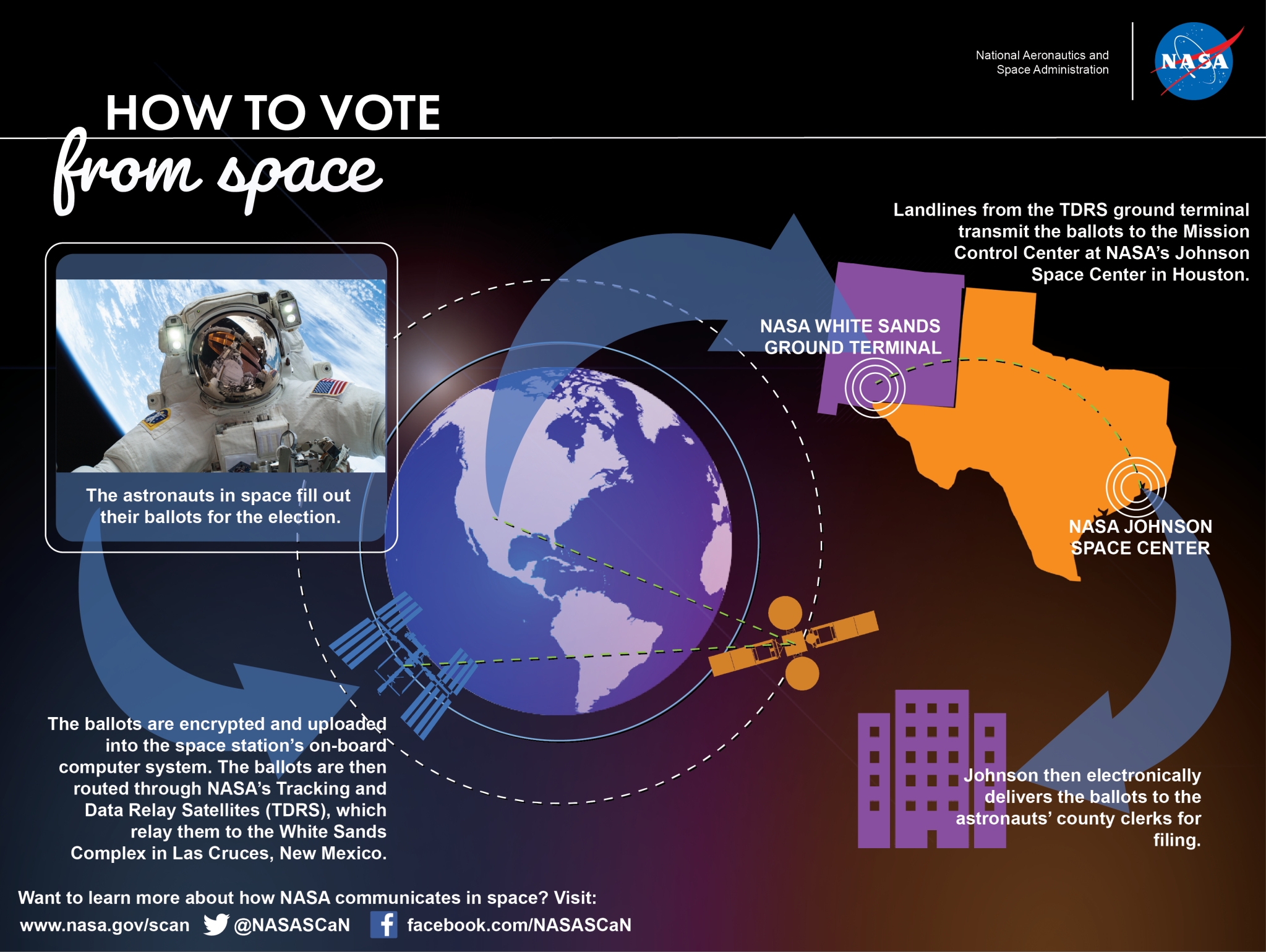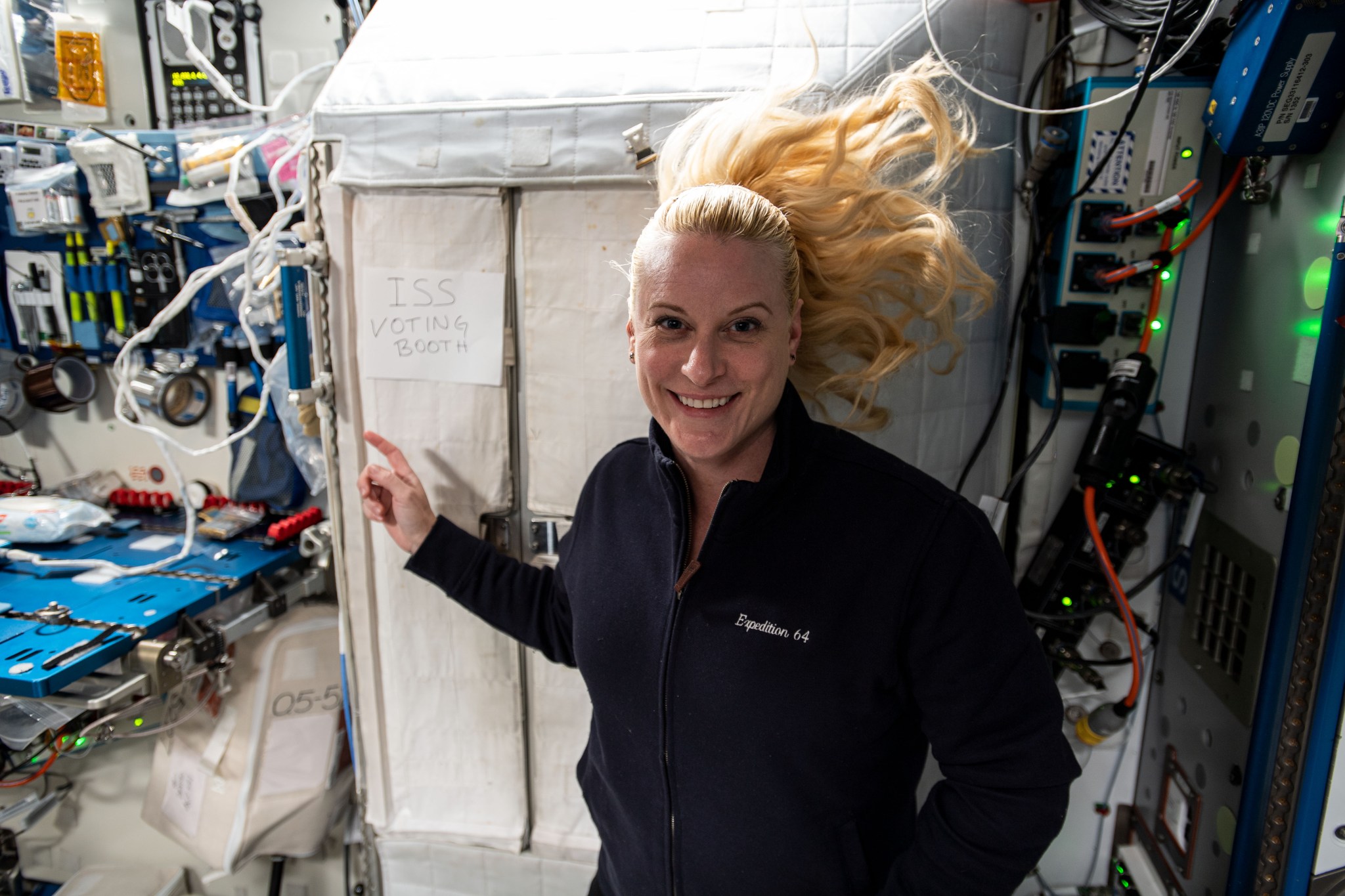This fall, Americans around the world are exercising their right to vote, whether that be on Election Day, or through absentee ballot or early voting. Americans off-world also have the opportunity to participate in democracy, and NASA’s Space Communications and Navigation (SCaN) infrastructure makes it possible.
In 1997, the Texas Legislature passed a bill that allowed NASA astronauts to vote from space. That year, NASA astronaut David Wolf became the first American to vote from space on the Mir Space Station. This year, NASA astronaut Kate Rubins became the latest to perform her civic duty from space on the International Space Station, 250 miles above Earth’s surface.
Rubins’ ballot — like most data transmitted between the space station and mission control — traversed through NASA’s Near Space Network, managed by NASA’s Goddard Space Flight Center in Greenbelt, Maryland. After Rubins filled out her specially designed, electronic absentee ballot aboard the orbiting laboratory, the document flowed through a Tracking and Data Relay Satellite to a ground antenna at the White Sands Complex in Las Cruces, New Mexico.
From New Mexico, NASA transfers the ballot to the Mission Control Center at NASA’s Johnson Space Center in Houston and then on to the county clerk responsible for casting the ballot. The ballot is encrypted and only accessible by the astronaut and the clerk to preserve the vote’s integrity.
Crewed exploration requires brave astronauts to forgo many of the comforts afforded those back on Earth. Though far from home, NASA’s networks connect them with their friends and family, and empower them to participate in society.






























